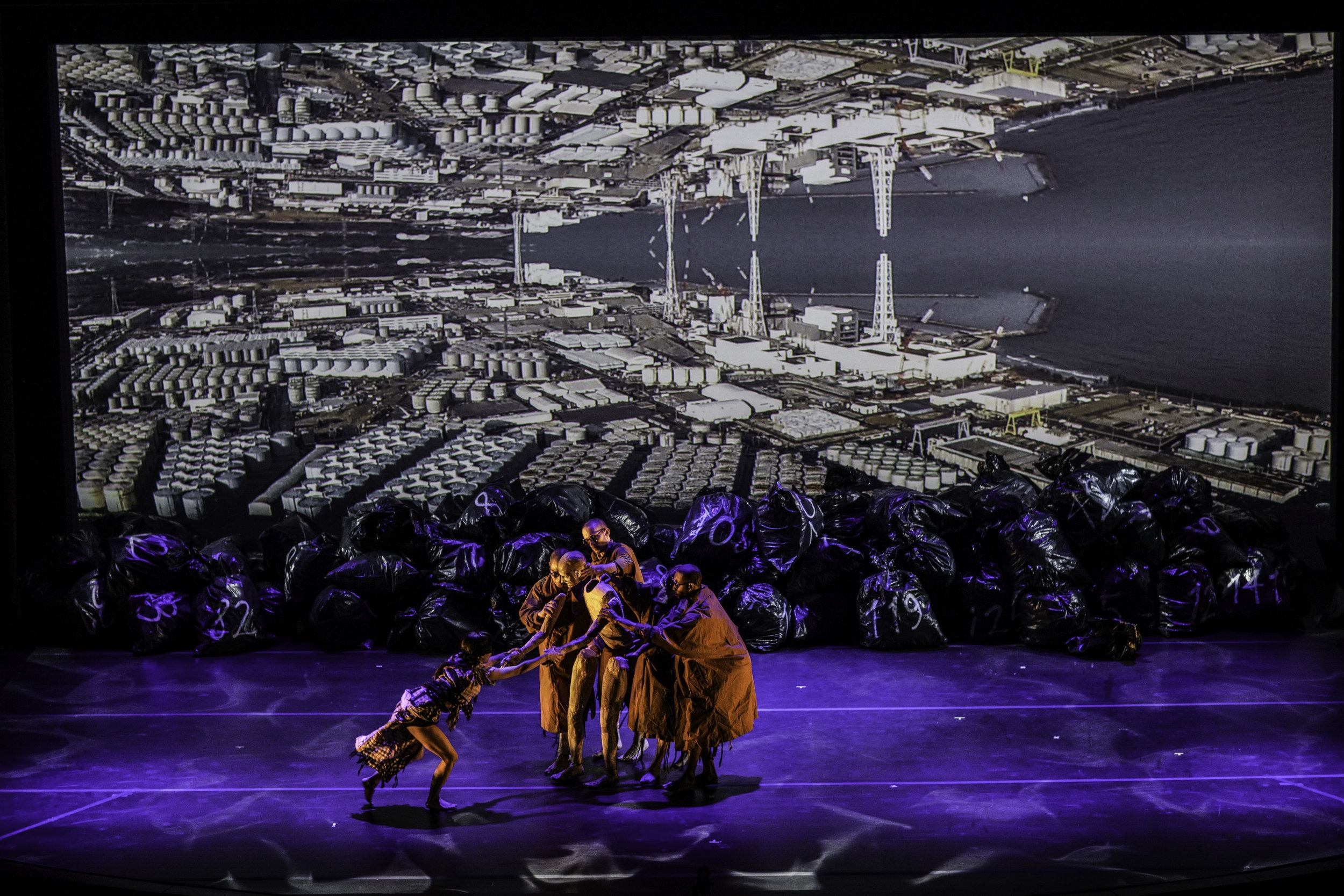
By Maria Archibald, Sustainability Office
Thinking about climate change can be so overwhelming that we might, at times, wish to look away. Some aren’t willing to look at all. Phantom Limb Company invites us to consider our relationship to the natural world through a different lens—one that is mesmerizing, emotional, and beautiful.
On Tuesday, April 20 at 4 p.m., co-founder and artistic director of Phantom Limb Company Jessica Grindstaff will give her GCSC seminar, “Storytelling, Imagism and Empathy: Awakening an Audience,” which explores puppetry and performing arts as methods of generating emotion and action around environmental issues and climate change. Three virtual performances by Phantom Limb are also offered through UtahPresents, with the final screening on April 22. Ticket holders will be able to view all three performances through April 30.
Jessica Grindstaff began her career as a visual artist, and arrived in the theater industry through an unexpected twist of events. “I can’t really explain how we ended up where we have,” she says of her journey with co-founder, Erik Sanko. “We had a visual art show together, and then the gallerist wanted him to do a little performance with the puppets that he was exhibiting.”
“We just accidentally ended up making this play,” Grindstaff says. “It was supposed to run for a couple of weeks in downtown New York, and then the New York Times wrote it up and it ended up running for three months.”
The show was a huge success. After it closed, a producer approached Grindstaff and Sanko and asked what they hoped to do next. “We both had been big fans of the Shackleton story, so we said let’s make a play about that,” Grindstaff reflects. They received a grant to fund their idea, and soon found themselves in Antarctica researching Ernest Shackleton’s 1914 Trans-Antarctic Expedition. “I would say that it was actually there where it started to become real for me,” Grindstaff says. “I started to understand what I wanted to do”
In Antarctica, Grindstaff and Sanko met and worked with scientists whose research centered on climate change and melting ice. “The majority of their work [was]… in one way or another cataloging the effects of climate change on the ice, on the land, on the animals that live there,” Grindstaff explains. “So, rather than the play just being about Ernest Shackleton, we introduced a component to the piece that was about the future of Antarctica and climate change.”
It became important to Grindstaff and Sanko that their work include a social and environmental message. “And so, we decided to make a trilogy,” Grindstaff says. “We would spend the next 10 years making a trilogy that was related to people’s relationships to the environment and nature, and how that was changing,”
The second piece in the trilogy, Memory Rings, is about the Methuselah—the world’s oldest living tree. “We were looking at the timeline of that tree’s life and everything that happened from germination until now, and looking for stories of people’s relationship to the forest or wood over that time,” Grindstaff says. The final piece in the trilogy, Falling Out, takes place in Fukushima and examines the aftermath of the 2011 tsunami and subsequent nuclear meltdown—a natural disaster paired with a manmade disaster.
Phantom Limb’s plays rarely have words, focusing instead on movement and imagery. “On stage, we’re placing images near one another and then ask an audience to make their own connections,” Grindstaff says. “Especially when you’re talking about things like climate—issues that are overly described to us in society in very specific ways that are often around fear, or guilt, or what we should personally be doing—I think leaving space for people in that conversation to find out who they are, and what their role and what their thoughts are in it and their emotions are in it, is really important and it’s really powerful.”
Grindstaff and Sanko use puppets, in part because they are an effective medium for generating emotion. “For a puppet to work, someone has to empathize,” Grindstaff explains. “The puppet is nothing. It’s a piece of wood or a papier-mache. An audience member has to engage in the work on an empathetic level, they have to put themselves inside of it. And I think around the topics of climate and climate change and our roles in our communities, that that is a great thing to do.”
The results of their art are hard to measure, Grindstaff says, but audience members often tell her that they feel moved and leave the theater thinking about their own roles within these complex issues. “They walked out looking at themselves, which is a goal, I think, in our work.”
Register for Grindstaff’s talk on Tuesday, April 20 at 4 p.m. to learn more about Phantom Limb Company’s work, and how environmental art moves hearts and minds.
